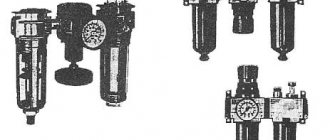SECTION VI. Products of chemical and related industries
32 TANNING OR DYING EXTRACTS; TANNINS AND THEIR DERIVATIVES; DYES, PIGMENTS AND OTHER COLORING SUBSTANCES; PAINTS AND VARNISHES; PUTTY AND OTHER MASTICS; PRINTING PAINT, INK, INK
3209 Paints and varnishes (including enamels and polishes) based on synthetic polymers or chemically modified natural polymers, dispersed or dissolved in an aqueous medium:
3209 10 000 based on acrylic or vinyl polymers:
3209 10 000 9 other
| Import duty: | 6,5% |
| Export duty: | Absent |
| Import VAT: | 20% |
HS codes
3210 - Other paints and varnishes (including enamels, polishes and adhesive paints); prepared water-based pigments used for finishing leather:
| 3210 00 | Other paints and varnishes (including enamels, polishes and adhesive paints); prepared water-based pigments used for finishing leather: |
| 3210 00 100 0 | – oil paints and varnishes (including enamels and polishes) |
| 3210 00 900 0 | - others |
(A) Paints (including enamels)
Paints (including enamels) of this heading consist of:
(1) Drying oil (for example, linseed oil), whether modified or unmodified, or natural resins, dispersed or dissolved in an aqueous or non-aqueous medium, with the addition of a pigment.
(2) Any liquid binder (including synthetic or chemically modified natural polymers) containing a hardener and pigments, but not containing solvents or other media.
(3) Rubber (other than synthetic) as a base for paints, either dispersed or dissolved in a non-aqueous medium, or dispersed in an aqueous medium, with the addition of pigment. This type of paint is applied in a thin layer to create a flexible coating.
(B) Varnishes (including volatile varnishes - polishes)
Varnishes of this heading include:
(1) Oil varnishes in which the film-forming agent is a drying oil (for example, linseed oil) or a mixture of drying oil with shellac, natural gum or resins.
(2) Varnishes and polishes based on shellac, natural gums or natural resins, consisting mainly of solutions or dispersions of shellac, natural gums or resins (shellac, copal, rosin, dammar resin, etc.) in alcohol (alcohol varnish) , gum, dry distillation or sulfate turpentine, white spirit, acetone, etc.
(3) Varnishes based on bitumen, pitch or similar products (sometimes known as “black varnish”). (For the distinction between varnishes based on bitumen, etc., and certain mixtures of heading 27.15, see exception (d) in the Explanatory Note to heading 27.15.)
(4) Solvent-free liquid varnishes, which consist of:
(a) liquid plastics (usually epoxy resins or polyurethanes) and a film former, called in this case a hardener. For certain varnishes, the hardener must be added at the time of application, in which case both components are contained in separate containers. These containers can be brought together in one package.
(b) one resin, while the formation of a film at the time of application of the varnish depends not on the introduction of a hardener, but on the action of heat or atmospheric moisture.
(c) oligomers (i.e. polymers containing 2, 3 or 4 monomer units) and cross-linked monomers, including those with photoinitiators. These varnishes are cured by exposure to ultraviolet rays, infrared rays, x-rays, electron beams and other radiation to form cross-linked lattice structures (hard dry film). Products of the types described in this subclause are not included in this heading unless expressly indicated for their use exclusively as varnishes. when this condition is not met, the products described in (a) and (b) are classified in group . Products of the type described in point (c) and used as photographic emulsions fall in heading 37.07.
(5) Varnishes and volatile varnishes (varnishes) based on rubber (excluding synthetic), dispersed or dissolved in non-aqueous media or dispersed in an aqueous medium, including compositions with added coloring matter soluble in the binder. Varnishes meeting this description must contain other ingredients that make them suitable for use solely as varnishes. When this condition is not met, these products are generally classified in the group.
(B) Adhesive paints (including shoe polish bleaches) and prepared aqueous pigment pastes of the type used for finishing leather
(1) Adhesive paints are primarily composed of a coloring pigment or a mineral substance (such as fine chalk) containing certain (usually very small) amounts of binders such as flesh glue or casein. Some types of adhesive paints contain fillers, insecticides, or antiseptics.
Adhesive paints include white gel, casein and silicate paints. They usually come in powder form, but can also be found in the form of pastes or emulsions.
(2) Shoe polish consists of fine chalk agglomerated into tablets using a binder (such as dextrin or hide glue). These are types of adhesive paints. They can also be presented in the form of a paste or dispersion.
(3) Prepared aqueous pigment pastes, such as those used for leather finishing, are compositions similar to conventional adhesive paints, which consist of mixtures of mineral or organic pigments and specified quantities of binders (eg caseinates). They come in the form of powders or pastes or aqueous dispersions and sometimes include compounds that impart shine to the skin.
Excluded from this heading are:
(a) Compositions for preparing surfaces of floors, walls, etc. based on plastics or resins with a high content of fillers, which, like traditionally used mastics, are applied using a spatula, trowel, etc. (heading 3214).
(b) Printing inks which, although of similar quality to paints, are not suitable for use as paints (heading 32.15).
(c) Powder paints, consisting primarily of plastics and containing additives and pigments, which are used to apply heat to objects, either with or without the use of static electricity (group ).
Customs payments and VAT payment
When exporting epoxy powder paint, you will not pay the VAT rate to the budget. The price for the client is 20% VAT.
VAT rate: 0%
Export payments: 0%
Excise tax: 0%
Payment for export Epoxy Powder Paint from Russia 0%
When exporting, you can also apply for a VAT refund. To do this, when selling epoxy powder paint, it is necessary to prepare a set of all necessary documents. We can help sell your products in the countries of the Customs Union and APEC
When importing (importing) into another country, you will need to pay a tax, similar to VAT. Let's say in the EU this is VAT. IMPORT VAT: 20%
Permits for the export of epoxy powder paint
If you are a manufacturer, we will help you prepare the necessary documents for the export of epoxy powder paint to the EU, CIS, ASIA, AFRICA or AMERICA.
- constituent papers of the exporting organization;
- foreign economic agreement or you can order the execution of the agreement;
- transaction passport for the contract amount over $50,000;
- invoice for cargo with the exporter's stamp;
- invoice with data on the weight and quantity of goods;
- transport documents;
- certificate or passport for goods;
Certification
Fire certification is carried out for paint and varnish products. Certification of water-dispersion paints is required if they are intended for interior decoration. For paints used for exterior decoration, a voluntary certificate is sufficient.
To carry out certification, it is necessary to provide product samples - about 5 liters of material. During the testing process, the following are examined:
- degree of flammability;
- degree of flammability;
- toxicity;
- smoke generation ability.
From 06/02/2021, the EAEU technical regulations for chemical products will come into force: EAEU TR 041/2017 “On the safety of chemical products”.
The list of products subject to assessment of compliance with the requirements of the regulations in the form of notification or permitting state registration includes EAEU HS codes from the groups:
- 21;
- 23;
- 25;
- 26;
- 27;
- 28;
- 29;
- 30;
- 31;
- 32;
- 33;
- 34;
- 35;
- 36;
- 37;
- 38.
Features of customs clearance
Customs clearance of chemical products is not carried out at all customs posts. For example, in the Moscow region only the Krasnozavodsk customs post is intended for this. And you still need to understand that the cargo is checked by people without chemical education, so customs authorities always require documents containing information:
- about the purpose of the goods;
- chemical formula;
- security.
For customs it is necessary to prepare permitting documentation:
- SGR – certificate of state registration confirming compliance with established standards and safety;
- additional permits and licenses – if they contain narcotic substances or alcohol.
- permission from the copyright holder to import goods into Russia if the brand is included in the ROIP.
You should ask the seller in advance:
- safety data sheets;
- explanatory letters in which product data is presented in an accessible and understandable way for non-specialists;
- test reports;
- certificates or letters on the chemical composition and percentage of substances.
Labeling is required indicating the manufacturing company and the composition of the product.
Some paints may contain a volume percentage of ethyl alcohol of more than 9%, so they are classified as excisable goods. The excise tax for 2021 is 566 rubles/hp. The percentage of alcohol in the product is confirmed by the “Test Report on the Ethyl Alcohol Content”.
At the same time, there are exceptions: paints in metal aerosol packaging are not subject to excise tax, regardless of the ethyl alcohol content, according to Letter 01-11/74405 dated December 29, 2020 of the Federal Customs Service of Russia. But they need to get expert evidence that they do not destroy the ozone layer. The list of substances was approved by Decree of the Government of the Russian Federation No. 228 of March 24, 2014 “On measures of state regulation of the consumption and circulation of substances that destroy the ozone layer.”
To import alcohol-containing non-food products, you need a license for purchase, storage and supply, which is issued by Rosalkogolregulirovanie (RAR). Products containing alcohol are considered unfit for consumption if the ethyl alcohol content is more than 1.5% by volume of Article 2, Clause 5. N 171-FZ “On state regulation of the production and circulation of ethyl alcohol, alcoholic and alcohol-containing products and on limiting the consumption (drinking) of alcoholic products” dated November 22, 1995. An exception is products that are packaged in metal aerosol cans with a capacity of more than 450 ml.
Paints containing solvents - toluene, acetone - are potentially narcotic substances. To obtain permission to import them, you need to obtain a conclusion from the Standing Committee for Drug Control and a license from the Ministry of Industry and Trade.
Storage and transportation of paints
As a rule, paints belong to dangerous goods, namely hazard class 3 (flammable substances), therefore, to transport such products it is necessary to select special vehicles according to the OOH, ADR classifiers. Paint is transported in plastic containers, cans, barrels, tanks, and tank containers.
If the compositions do not contain flammable, volatile or toxic substances, then they are transported without special conditions.
Requirements for the transportation of paints and varnishes are established in GOST 9980.5-2009 “Paint and varnish materials. Transportation and storage." Requirements for marking dangerous goods are defined in GOST 19433-88 “Dangerous goods. Classification and labeling (with Amendment No. 1).”
Transportation of paints is carried out by road, rail, and sea transport. Transporting paint with a volume of more than 100 ml by air is prohibited. At the same time, containers, containers, and tanks are marked as dangerous goods.
- When transporting paints and varnishes with a volume of less than 60 liters on one vehicle, it is not necessary to create special conditions for transportation.
- If the cargo volume is more than 60 liters, but does not exceed 1000 liters, the requirements of ADR must be met.
- If the volume of cargo transported on one vehicle is more than 1000 liters, a permit from the Ministry of Transport, a license and a driver’s permit are required.
HS codes: 3209100009 – 3209900000
3209100009
SIKKENS “ALPHATEX IQ” WATER-BASED ACRYLIC PRIMER - 25 PL.CONTAINERS.10L; 20 PL.CONTAINERS.4.65L COMPOSITION:POLYACRYLIC COPOLYMERS WITH FILLER - 50%, (FILLER - TITANIUM DIOXIDE-10-40%), WATER - 50%
Having a problem? Call our customs specialist:
Moscow and region (call is free)
Saint Petersburg
3209100009
CAR PAINT-PENCIL (PAINT, VARNISH INCLUDED) FOR COLLECTION OF SCRATCHES, MANUFACTURED. BASED ON ACRYLIC POLYMERS, SOLUBLE IN WATER, WITHOUT SODIUM. ALCOHOL, NOT IN AEROS. PACKAGING. FOR MAZDA A/M
3209100009
TOOLS FOR AGRICULTURAL PURPOSES: ART. No. 0301313 – SPRAY MARKER “MS” (PAINT FOR MARKING “MS SPRAY”) FOR MARKING PIGS (GREEN) – 312 PCS., ART. No. 0301314 – SPRAY MARKER “MS” (PAINT FOR MARKINGS “MS SPRAY”) FOR MARKING PIGS (BLUE) – 312 PCS., AR
3209100009
PAINTS BASED ON ACRYLIC POLYMERS DO NOT CONTAIN. ETHYL. ALCOHOL AND OZONE DEPOSITION. B-B, B NON-AEROSOL. UPAK. (PLASTIC BUCKETS) EMULSJA MALARZ KLASYCZNY BIALY EACH 10L -176PCS; "ULTRA BIEL BIALY" EACH 1L - 72PCS, EACH 3L - 72PCS, PO5L - 90PCS, EACH 10L - 88PCS, SNIEZKA ECO
3209100009
SEPIRET 9242 BLUE - COATING AGENT FOR SEED COLORING, CONTAINING ACRYLIC POLYMER (3-7%) AS A FILM FORMER, DISSOLVED IN WATER, WITH ADDITIVES OF COLOR PIGMENTS-GOLU FIGHT (4-9%) AND RED ( 0.5-2%)
3209100009
LEVIS “FERRO RADIATOR” AQUEOUS ACRYLIC FINISHING PRIMER FOR INTERIOR WORK - 12 CAN.CAM.0.75L COMPOSITION:ACRYLIC RESIN WITH FILLERS - 46%, (FILLER: TITANIUM DIOXIDE, MICROTALK - 18%), PROPYLENE GLYCOL - 5-10 %, WATER - 44- 49%
3209100009
WATER MULTI-LAYER VARNISH HESSE HYDRO-MULTICOAT LACQUER, MADE BASED ON ACRYLIC POLYMERS, TEST SAMPLE FOR ADVERTISING AND MARKETING PURPOSES, USED IN FURNITURE PRODUCTION. COMPOSITION
3209100009
ATL ANAPHORESIS SOIL VEA98115-7-05, RAL 7012 GRAY, CODE OKP23 8860, WATER BASED, IS A PASTE BASED ON ACRYLIC RESIN (MODIFIED POLYACRYLATE 30-40% MASS), PIGMENT-TITANIUM DIOXIDE ( 20-30% MASS), COLOR FILLERS AND PIGMENTS (1-5
3209900000
PIGMENT CATAPHORESE 941 12-PIGMENT PASTE MADE BASED ON EPOXY RESIN (8%), DISPERSION. IN AN AQUATIC ENVIRONMENT (WATER-36%, ORG. SOLVENTS-4%, WITH SOLUTION OF PIGMENTS-35%, FILLER-14% AND ADDITIVES-3%, FOR PROFESSIONAL USE IN THE CAR
3209900000
QUICK-DRYING WOOD-PROTECTIVE, MOISTURE-RESPELLANT, DECORATIVE WOOD FINISHING PRODUCTS FOR HV/WORK. SACRED SUBSTANCE-ALKYD, (SOLVED.WATER) “PINOTEX INTERIOR”
3209900000
WATER DISPERSION OF BLACK PIGMENT FOR PAINTING SPRINGS BY ELECTRODEPOSITION METHOD, GRADE CA142E – 10 CANISTERS OF 20 KG.
3209900000
WATER-BASED TWO-COMPONENT PARQUET VARNISH BASED ON POLYURETHANES (NO ALCOHOL, PACKAGING IS NOT AEROSOL, NOT FIRE RETARDANT, SUPPLIED WITH HARDENER)
3209900000
WATER-SOLUBLE BLACK PAINT / GW 21-9190-8033 SM IDR NERO IMM LS 180,000 KG-ALKYD-MELAMINE RESIN BASE, COMPOSITION:ALKYD-MELAMINE RESIN-48.5% by weight, WATER-48% by weight, MINERAL PART (CE COMPOUNDS RY, BARIUM, IRON, CALCIUM, SILICON, ETC.
3209900000
WATER-SOLUBLE VARNISH BASED ON SYNTHETIC POLYMERS (BINDER IN ACRYLATE), USED TO PROTECT WOODEN STRUCTURES FROM MOISTURE AND HIGH TEMPERATURES, FOR INTERIOR WORK: CELCO SAUNA "KELCO SAUNA"., NOT SOD. ALCOHOL
You can find additional information on the topic in the Unified Customs Tariff section. Section VI.
Free consultation by phone:
Moscow and region (call is free)
Saint Petersburg
Attention! Due to recent changes in legislation, the legal information in this article may be out of date!
Our specialist will advise you free of charge.



